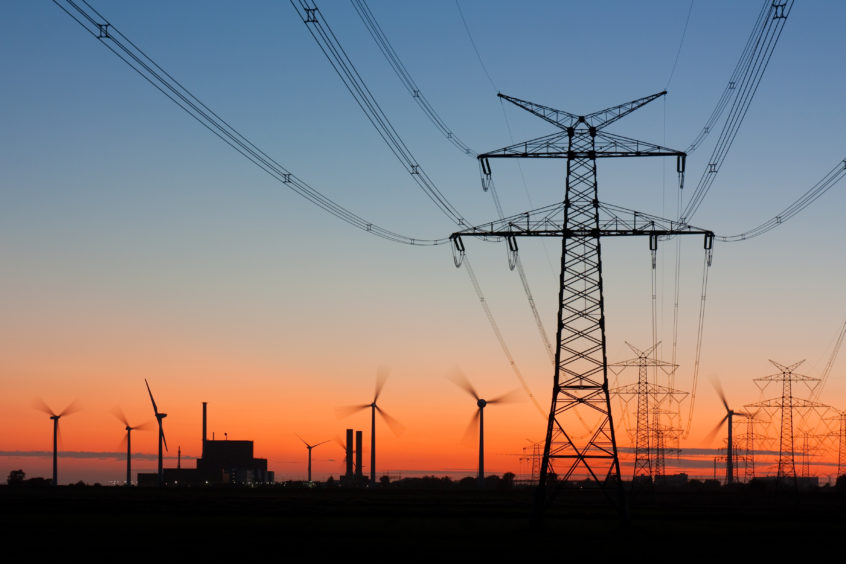
Diversification – in terms of energy sources, innovation and resource – is the vital component to creating a thriving energy sector in Scotland.
The long-term plan must be to get ourselves to a place where we are energy self-sufficient. Currently our energy security is poor, with a high dependence on other countries.
However, we have an opportunity here to diversify through investment, marrying that with a need to protect what we have – and need – in the here and now.
The latest National Grid ESO figures show that, of the energy generated in the UK, 26.6% was from gas, 34.8% from wind, 13.9% was imported, with nuclear, biomass, coal, hydro and storage making up the remainder. If we stopped using gas today, then a quarter of the generation that we require would fall off.
In August 2020, we were at 43%. The figures are dropping for energy generated from gas but we’re not there yet.
A balanced approach to UK energy security is the route forward. While the power generated by renewables gathers pace, there remains a base reliance on oil and gas in the short term.
Amongst our client base we encounter daily discussions on a variety of financial and fiscal advisory matters, with one key word commonly coming to the fore … diversification.
Clients are investing in new machinery to service the renewables boom, acquiring consultancies to transition these towards renewables, decommissioning, geothermal and carbon capture projects.
Clients who previously supplied pipes for oil and gas exploration are now supplying these for geothermal projects in Europe. While wave-power may not yet have fulfilled its potential, there remain pioneering businesses that are persevering and refining their power generating technologies.
The sector must secure the people it needs for the future. Recruiting for these projects will be very difficult as they are so niche. Keeping the expertise we have in the country will be key. We need to diversify the skills of the people who already work in energy.
Investment
The National Grid ESO in its Beyond 2030 report recommends a set of offshore and onshore network upgrades which total an additional £58 billion of direct investment in our electricity networks.
It facilitates the connection of an extra 21GW of offshore wind as well as a breadth of other low carbon generation across the UK.
These could help create the backbone needed to transfer power for and to future industry. It would create and sustain 20,000 jobs annually, with 90% of these outside of London and the south-east.
There does now seem to be political intention to incentivise and back these projects and that’s key. The outlook is more positive than we have seen. There is more optimism in the industry and planning for the future.
Government investment is crucial. Battery storage for example has previously been largely self-sufficient with no government subsidies at all to begin with. That made the sector particularly difficult because you then needed investors to get comfortable with unpredictable and inconsistent income streams.
While the recent UK government announcements over the extension of the windfall tax were previously directly blamed for the cancellation or mothballing of exploration projects, it is probable that the political support of the sector from politicians has encouraged more positive exploration investment decisions.
HMRC anticipate significant tax inflows from the 2029 extension, however, whether such fiscal inflows are re-invested in encouraging investment in the renewables sector remains to be seen.
However, let’s not forget that recent political support for continued oil and gas extraction continues to encourage the maximisation of North Sea producing assets and infrastructure.
While a thorny issue having such natural resources on our doorstep along with the infrastructure and skills to cost-effectively extract these, it remains simply another part of the energy equation.
Economic statistics point towards 2024 interest rate reductions that will aid such investment.
Anyone who has driven through Dundee recently cannot fail to have noticed the huge jack-up rigs in the harbour or the large offshore wind-turbine blades and towers.
There is a mixture of both floating and fixed windfarms planned for the east coast of Scotland and a large industry involved in manufacturing the anchor systems and platforms on which these are installed. Installation requires significant infrastructure.
In Aberdeen, the South Harbour is a vital component providing large vessels with anchorage and quayside facilities for all aspects of the energy sector.
Focus
Much of the focus on the energy sector falls on the north-east of Scotland, an area supported by MHA in Aberdeen for more than 34 years.
It is used to more pronounced economic peaks and troughs than the rest of the UK where the oil price remains the key economic barometer.
However, there is certainly cautious optimism that diversification is gathering pace.
- Mark Brown is a Partner with MHA. He has more than 30 years’ industry expertise. His primary role is to provide audit, accountancy and related advisory services to clients in the north-east of Scotland. This includes corporate finance support and general business advice supported by tax colleagues locally and other specialists within MHA. His portfolio of clients is primarily those involved in the energy sector in or around Aberdeen, Europe’s energy capital.
- Michael Meakin-Blackwell is Business Services Director with MHA. A Fellow of the Association of Chartered Certified Accountants, he works with SMEs across a variety of sectors, especially renewables and sustainable energy and in construction. He re-joined MHA in 2022, having originally trained with the firm, having been CFO of a large design and build contractor in the energy sector.
Recommended for you
